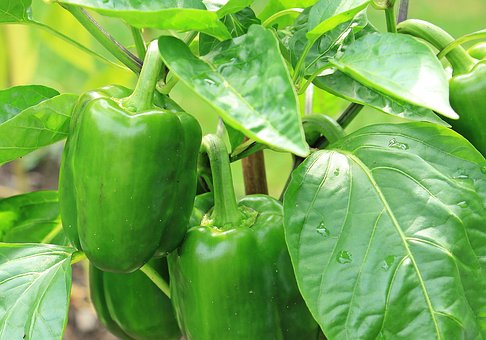
In the world of agriculture, growing high-yield bell peppers is only half the battle—preserving your capsicum (bell pepper) is the other. For Nigerian farmers who’ve invested heavily in bell pepper farming, post-harvest losses remain one of the greatest threats to profitability. While bell pepper farming profitability in Nigeria is promising, without effective preservation methods, even the best yields can result in disappointing profits.
This article explores effective strategies for preserving your capsicum (bell pepper) to reduce waste, maintain quality, and increase your returns. Whether you’re a smallholder farmer, greenhouse operator, or agribusiness investor, mastering post-harvest handling is key to unlocking the full economic potential of your farm.
Understanding the Shelf Life of Bell Peppers
Bell peppers, known locally as tatashe, are a staple in Nigerian kitchens and an increasingly important cash crop.
Fresh bell peppers are highly perishable, with a shelf life of 7 to 14 days under typical market conditions. In Nigeria, where temperature and humidity can fluctuate dramatically, poor handling can reduce shelf life to just 3 to 5 days. These losses are often due to:
- Inadequate storage temperature
- Bruising during transport
- Fungal infections
- Delayed harvesting
By implementing the right preservation techniques, farmers or consumers can extend freshness, preserve nutritional content, and reach more lucrative markets.
Harvesting at the Right Time
Preservation starts even before the harvest. Bell peppers should be harvested:
- When they reach full size and desired color (green, red, yellow, or orange)
- In the early morning or late afternoon to avoid heat stress
- Using sharp tools to prevent bruising and stem damage
Action Tip: Always inspect for disease or soft spots during harvest. Avoid harvesting in wet conditions, as moisture increases the chance of rot.
Post-Harvest Handling: The First 24 Hours
The way you handle your peppers immediately after harvest significantly impacts their shelf life. Key steps include:
- Cleaning: Gently remove soil and debris using a dry cloth or a soft brush. Avoid washing unless necessary.
- Sorting and Grading: Separate fruits based on size, color, and quality. Damaged or diseased peppers should be discarded or processed immediately.
- Curing (optional): Allow peppers to rest in a shaded, well-ventilated area for 24 hours to reduce surface moisture.
Proper storage can double or even triple shelf life. Here are some best practices:
1. Temperature and Humidity Control
- Ideal temperature: 7°C–10°C (45°F–50°F)
- Relative humidity: 90–95%
- Avoid freezing or storing below 5°C, which can cause chilling injury
2. Ventilated Containers
Use stackable plastic crates with air holes instead of traditional sacks. They reduce bruising and allow airflow.
3. Cold Rooms and Refrigeration
If you farm at a commercial scale, investing in a cold room or walk-in refrigerator significantly improves bell pepper farming profitability in Nigeria by preserving quality for longer transport and export. The Nigerian Stored Products Research Institute (NSPRI) provides insights on cold storage innovations for smallholder farmers.
Traditional Preservation Methods for Rural Farmers
Not every farmer has access to cold storage. Here are alternatives:
1. Sun Drying
Slice the peppers and dry them in the sun using raised mesh trays to prevent contamination. Store in airtight containers.
2. Smoking
Smoking sliced peppers adds a unique flavor and extends shelf life. Ideal for farmers who supply local food processors.
3. Solar Dryers
Inexpensive and effective, solar dryers speed up the drying process while protecting from dust and pests.
Value Addition: Processing and Packaging
Adding value to your peppers ensures you can sell during off-seasons or reach new markets.
Processing Options:
- Dried powder (paprika-style spice)
- Pickled bell peppers
- Bell pepper paste or sauce
Packaging Tips:
- Use food-grade plastic or resealable pouches
- Label products with harvest date, location, and nutritional information
Well-packaged products appeal to supermarkets and health-conscious urban consumers, boosting your brand’s visibility and revenue.
Preserving for Export: Meeting Quality Standards
If you’re exporting bell peppers, preservation becomes even more critical. International buyers expect:
- Consistent color and size
- No pesticide residue
- Proper post-harvest handling
- Cold-chain logistics
Certifications like GLOBALG.A.P. or NAFDAC registration can improve market access and justify premium pricing.
The Link Between Preservation and Profitability
Bell pepper farming profitability in Nigeria is directly linked to how well you manage post-harvest losses. Studies show that up to 40% of horticultural crops perish before reaching consumers. Reducing this loss rate increases your net returns, improves food security, and builds trust with buyers.
Example: A farmer in Oyo State reported a 50% increase in income after investing in ventilated crates and establishing a simple cold room.
Final Thoughts: Secure Your Harvest, Secure Your Profit
Preserving your capsicum (bell pepper) is not just about maintaining freshness—it’s about maximizing your hard-earned investment. Whether you’re producing for local markets or aiming for export, implementing the right preservation techniques ensures you get the best value from every harvest.
As bell pepper farming profitability in Nigeria continues to rise, farmers who prioritize post-harvest handling will stay competitive, resilient, and successful. You can learn How to Start a Profitable Bell Pepper Farm in Nigeria